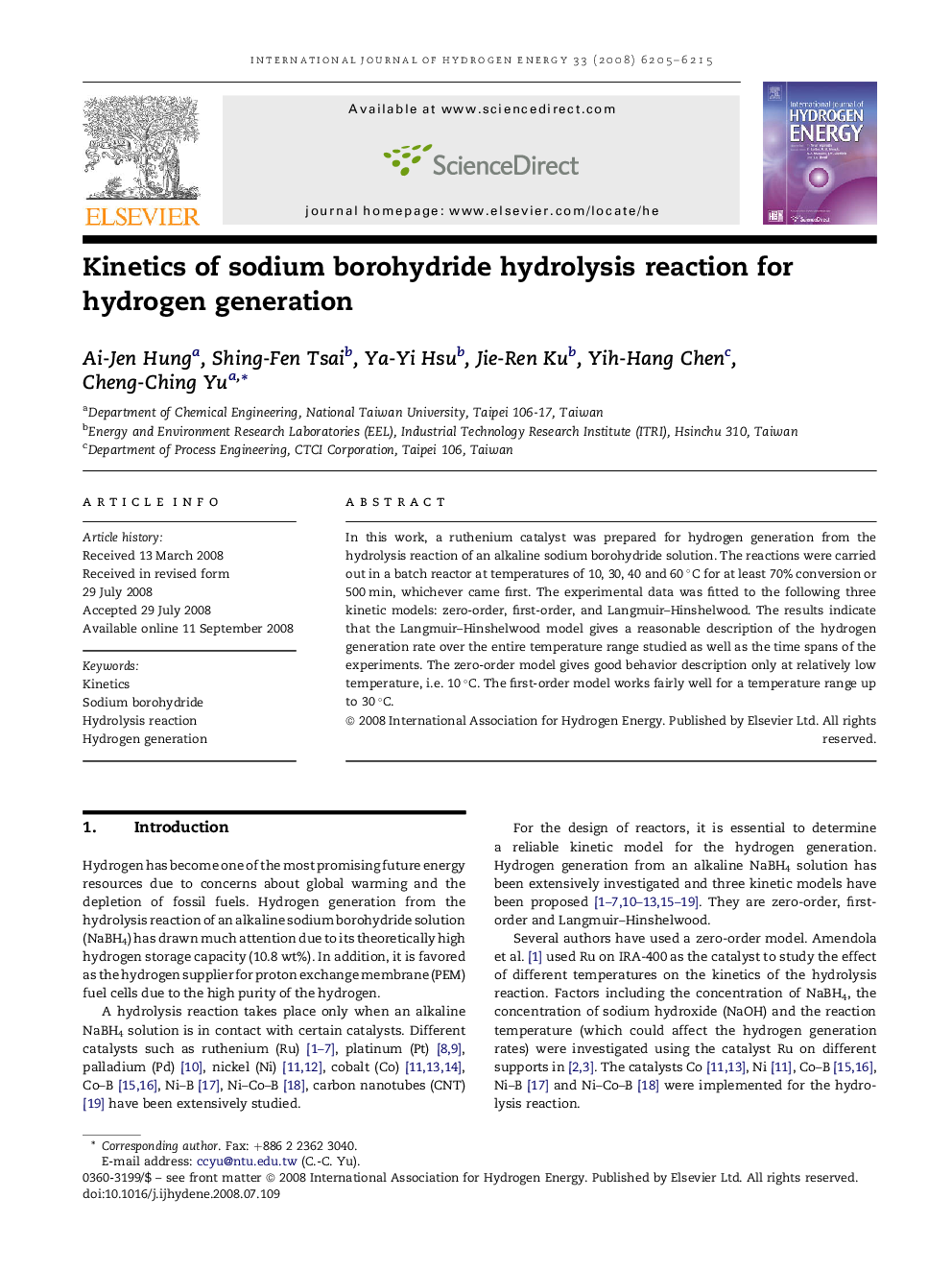| Article ID | Journal | Published Year | Pages | File Type |
|---|---|---|---|---|
| 1283622 | International Journal of Hydrogen Energy | 2008 | 11 Pages |
In this work, a ruthenium catalyst was prepared for hydrogen generation from the hydrolysis reaction of an alkaline sodium borohydride solution. The reactions were carried out in a batch reactor at temperatures of 10, 30, 40 and 60 °C for at least 70% conversion or 500 min, whichever came first. The experimental data was fitted to the following three kinetic models: zero-order, first-order, and Langmuir–Hinshelwood. The results indicate that the Langmuir–Hinshelwood model gives a reasonable description of the hydrogen generation rate over the entire temperature range studied as well as the time spans of the experiments. The zero-order model gives good behavior description only at relatively low temperature, i.e. 10 °C. The first-order model works fairly well for a temperature range up to 30 °C.
